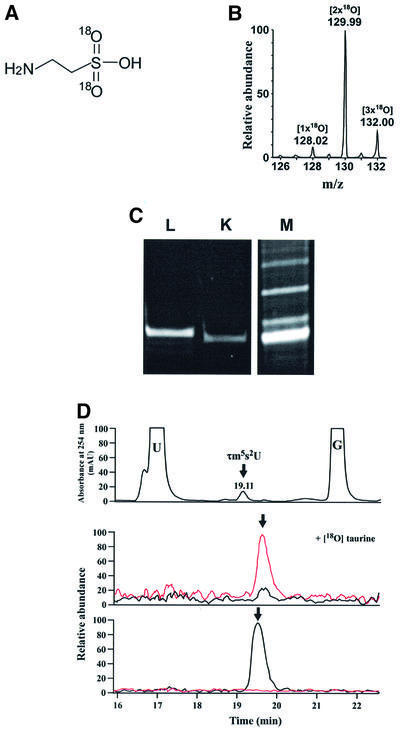Fig. 3. (A) Stable isotopic taurine with two [18O]oxygens. (B) Mass spectrum for synthetic [18O]taurine. Judging from the peak intensities, 80% of the synthetic taurine had two [18O]oxygens (m/z 130), while the remaining 7 and 13% had one (m/z 128) and three (m/z 132), respectively. (C) Polyacrylamide gel electrophoretic analysis of purified human Leu(UUR) (L) and Lys (K) mt tRNAs from HeLa cells cultured with [18O]taurine. Each tRNA was visualized by ethidium bromide staining. The crude RNA fraction (M) is shown as a marker. (D) Nucleoside analysis of mt tRNALys by LC/MS to detect τm5s2U incorporating [18O]taurine. Top panel: UV trace at 254 nm with τm5s2U indicated. Middle and lower panels: mass chromatograms of τm5s2U from HeLa cells cultured in the presence (middle) and absence (lower) of [18O]taurine in the mass ranges m/z 397.5–398.5 (black line) for natural τm5s2U and m/z 401.5–402.5 (red line) for [18O]taurine- containing τm5s2U. The longer retention time of τm5s2U in the mass chromatograms compared with that in the UV trace (19.11 min) arose from a time lag between the UV detector and mass spectrometer in the LC/MS system.

An official website of the United States government
Here's how you know
Official websites use .gov
A
.gov website belongs to an official
government organization in the United States.
Secure .gov websites use HTTPS
A lock (
) or https:// means you've safely
connected to the .gov website. Share sensitive
information only on official, secure websites.
